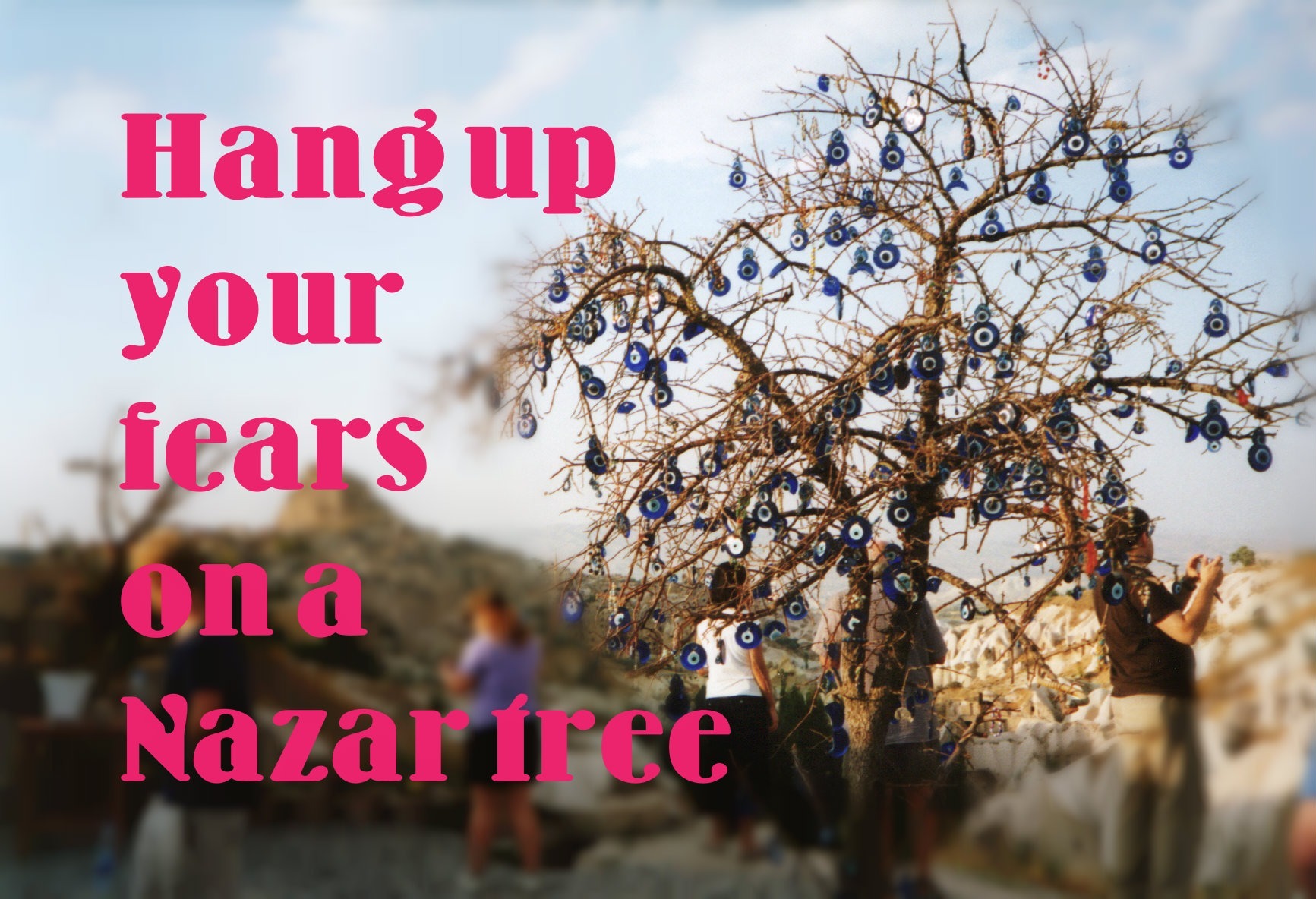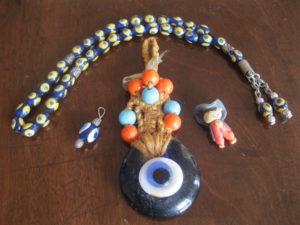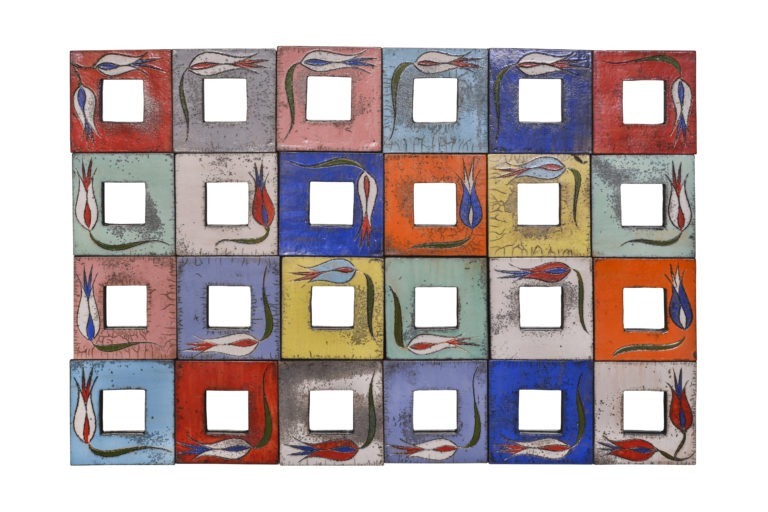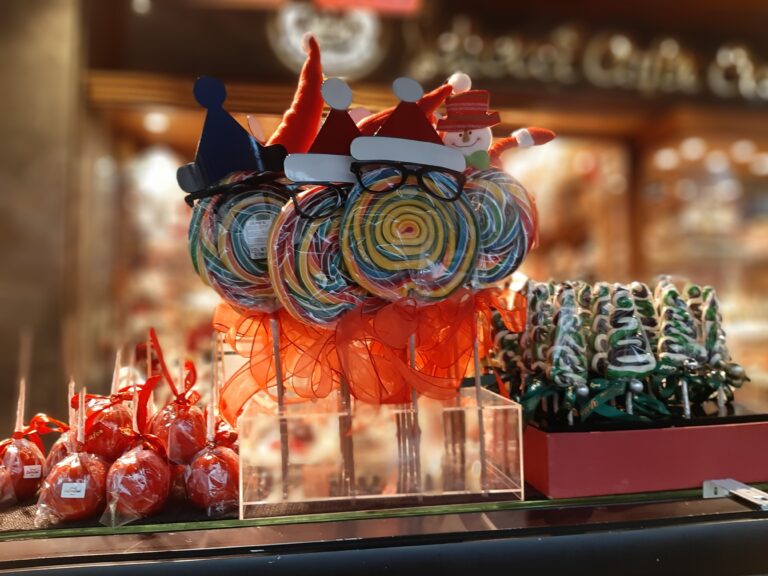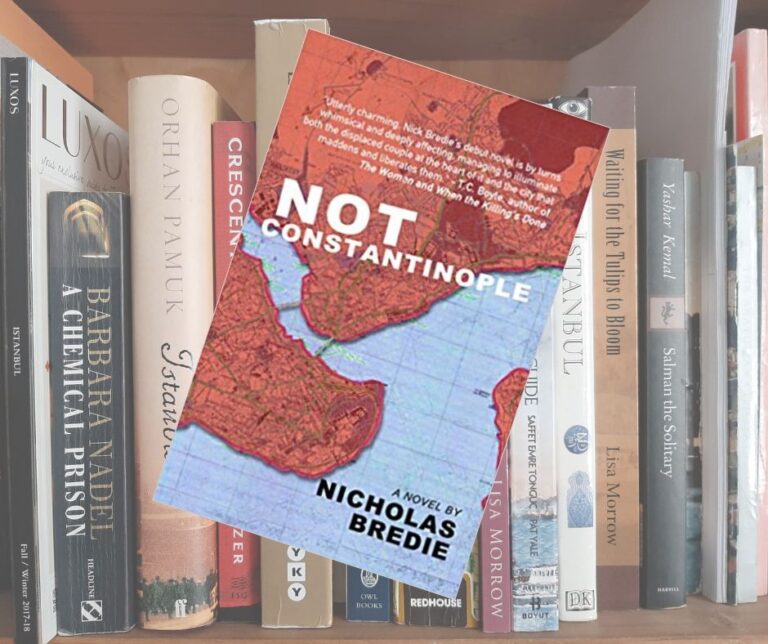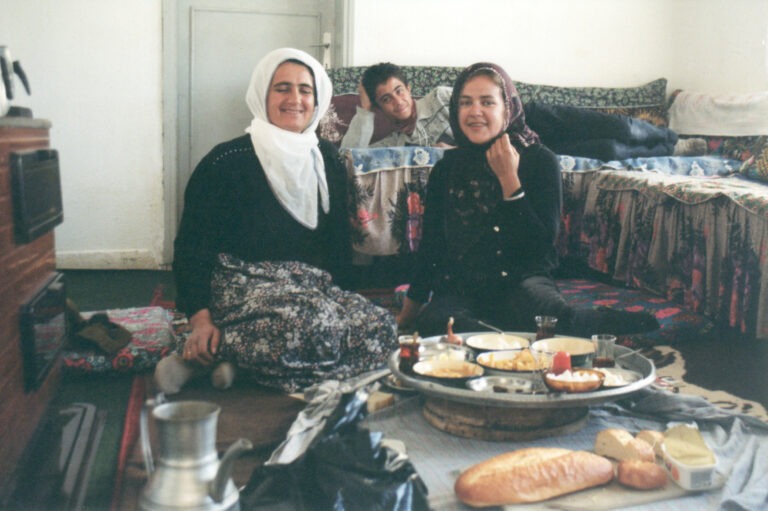The Evil Eye in Turkey – Nazar
From new born babies to wise old grandparents, everyone in wears a nazar boncuğu, a blue bead evil eye in Turkey, at some stage in their lives. Turks believe that ill-wishers can cause harm just by looking malevolently at their victim. Wearing an evil eye protects against this. However, if an individual is unfortunate enough to be cursed, there are a few things they can do to lift it.
Different ways to protect against the evil eye in Turkey
The easiest way is to put on a muska. These small, often silver amulets contain a prayer written on a small piece of paper, blessed by an imam, the prayer leader of a mosque. Should the curse prove too strong, it will be necessary to call on the services of a lead pouring specialist. Usually women, these individuals melt lead on a fire in a small pot. When the molten lead is ready it’s poured into a basin of cold water containing some bread and onion. The bowl is held above the head of the accursed who has a sheet covering their head.
The bread and the onion are believed to absorb and dispel the negative energy of the curse and are later thrown away. The shape the lead took when it contacted in the water is interpreted to try to identify the people who are the source of the evil wishes.
The nazar in this photo all belong to me. The little fellow with the blue hat is one of two I was given by a shop keeper in Kaş in 1990, when he’d run out of small change. Originally I had two of them, pinned to my jacket, but when I lost one the other went in to my wallet, where he now lives with the coins. My husband and I bought the middle one in Istanbul in 1996, and it lives above our apartment front door.
The worry beads were given to me by my students at Erciyes University on November 24, 2002. They formed part of my Teachers Day present, which consisted of the beads, a scarf, hat and gloves all in yellow and blue, as well as two plastic roses, also yellow and blue. Those of you familiar with Turkish football will know these are the Fenerbahçe team colours. The other little bead nazar was a present from a student from the same university, given to me in 2004 when we went away on an excursion to Eastern Turkey
Origins of the evil eye in Turkey
Nearly all Turkish bead makers are descendants of Arab bead makers who migrated to Izmir at the end of the 18th century from the West Bank town of Hebron, an important centre for the glass industry. I can’t imagine how we’d cope with the evil eye if they hadn’t come to Turkey!
You can learn more about old traditions and life in modern Istanbul in my book Inside Out In Istanbul: Making Sense of the City.
